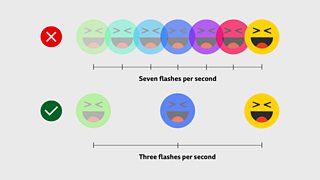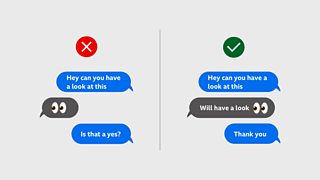Overview
Emojis and gifs are little images which are commonly found imbedded into text, though they do occasionally stand alone. They are typically used in informal communication such as over text but, again, they can be found elsewhere too. And, as the name suggests, 'custom emojis and gifs' are personalised versions of these.

When should they be used?
Emojis and gifs should only ever be used to enhance meaning or add context to what you have written. Of course, you may feel you know someone well enough to use these images in isolation, but please just don't assume without checking that the recipient can understand and receive your emojis clearly and safely.
What should be taken into consideration when using them and why?
As already mentioned above, there are a few things it would be good to keep in mind when creating and using custom emojis and gifs. If you could please try to:
Limit the animation
Not use rapid animation
Stick to stationary images on a transparent background
Avoid flashing
Avoid ambiguity
Add a thoughtful text alternative when creating your custom emoji
Emojis and gifs should also comply with general existing 大象传媒 guidelines, such as 大象传媒 Mobile Accessibility Guidelines and Making Accessible Animated Images.

But鈥� why?
There are many reasons why we ask you to try to follow this guidance, and here are just a few:
Flashing images and rapid animation can trigger fits for those with photo-sensitive epilepsy; and they can also have a negative impact on people with other conditions.
Whilst standard emojis normally come with a preprogrammed description for those using speech software to read text, this will almost certainly not be the case for a custom emoji or gif. That's one reason why we request that they are only used to enhance meaning, not replace it.
We ask that you keep your emojis and gifs as unambiguous as possible because some people with conditions like Autism won't necessarily be able to understand inferences.

For larger, more important images (or non-rapid animations), it may be necessary and helpful to add alternative text descriptions. For more help as to what to do in order to make larger images or animations accessible, please see this article: How to make accessible animated images.


